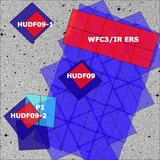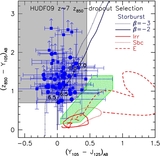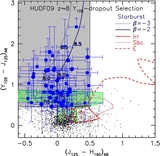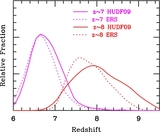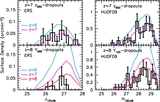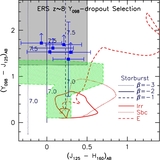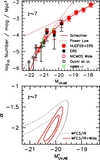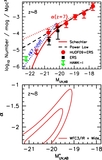Image Details
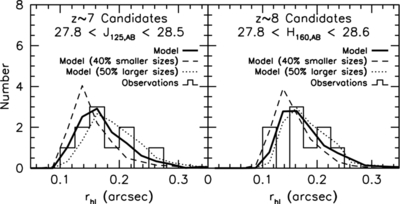
Caption: Figure 18.
Comparison of the half-light radii of z ~ 7–8 galaxies observed over the HUDF09 field (histogram) with those from our fiducial galaxy model (thick solid line; used to estimate the selection volumes, see Appendix C). The left panel is for our z ~ 7 selection and the right panel is our for z ~ 8 selection. Galaxies are selected from our simulations in exactly the same way as from the observations. The magnitude intervals plotted are chosen to be sufficiently brightward of the faint limit to allow for the selection of galaxies over a range of sizes, while still including a significant fraction of our HUDF09 z ~ 7–8 sample. Also shown is the half-light radius distribution for a galaxy population with sizes that are 40% smaller and 50% larger than our fiducial model (dashed lines and dotted lines, respectively). The observed half-light radius distribution is in excellent agreement with the sizes from our fiducial model. The fit to the other size models is less good (the disagreement ranges from ~1–2σ), but the uncertainties are large. Deeper observations will be required to establish the size distribution more accurately to very low luminosities. We find no evidence that our model size distribution is too large, and therefore that our selection volumes are too low, as suggested by Grazian et al. (2011; see Appendix A).
Copyright and Terms & Conditions
© 2011. The American Astronomical Society. All rights reserved.


